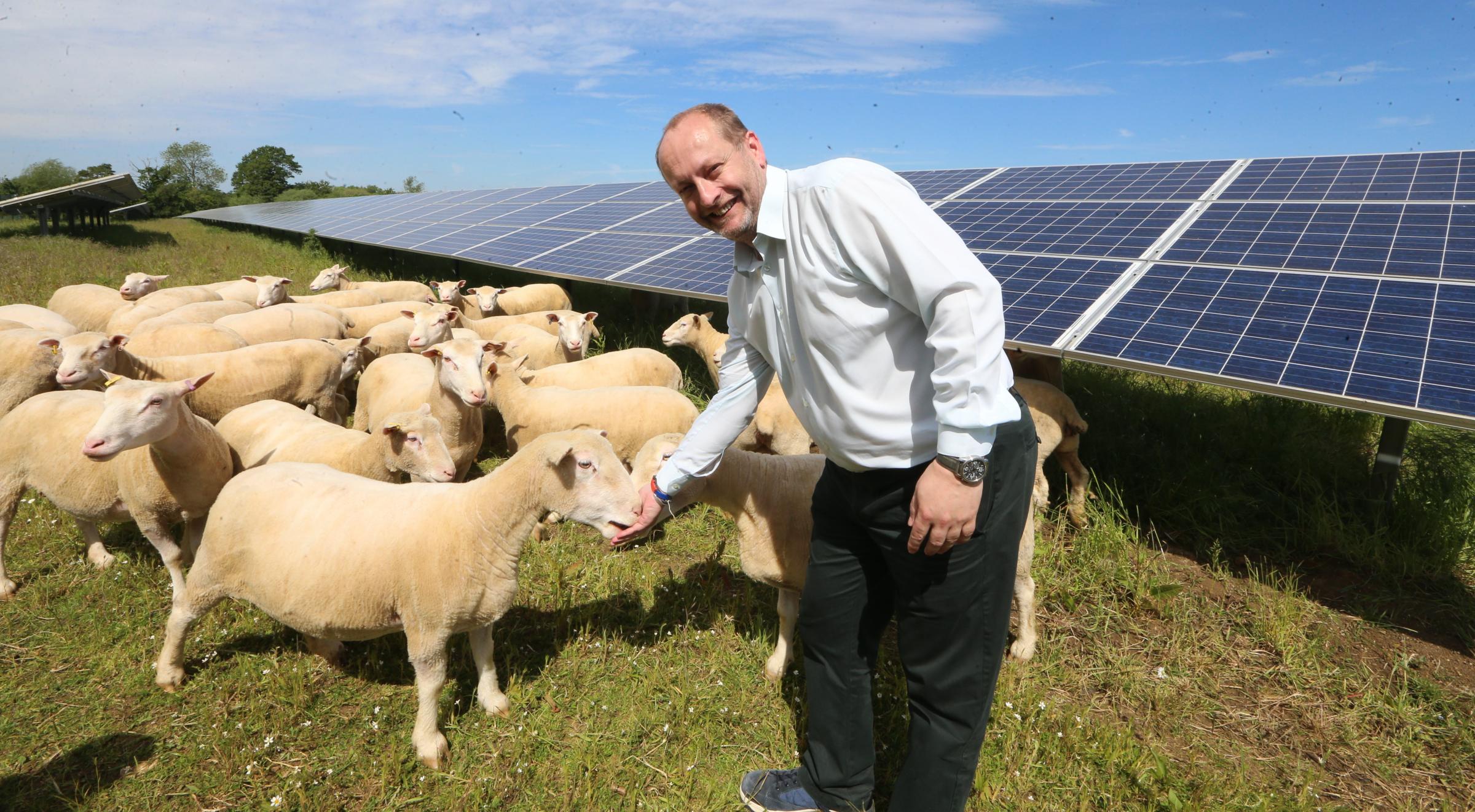Large scale solar farms remain overwhelmingly popular with neighbours and local voters, a government study has revealed.
More than four in five – or 81% – of respondents questioned about possible erection of a big PV project in their vicinity reported they’d be very happy, happy or indifferent if it went ahead, according to energy ministry D-BEIS’ tracker study, Public Attitudes to Energy Infrastructure.
Only 11% of locals expressed objections, the poll found. It surveyed nearly 4,400 representative adults in the month to late March.
Such levels of voters’ support elevate solar PV to Britain’s most popular technology pumping clean energy.
Relayed by trade lobbyists SolarEnergyUK, the numbers collated by a Whitehall ministry give the lie to frequent assertions usually from Conservative backbenchers that solar farms harm householders’ visual amenity.
Two years ago Faversham MP and junior minister Helen Whately criticised one of Britain’s biggest PV farms, the £450 million, 350MW Cleve Hill project, covering nearly 1,000 acres of the north Kent coast. Projects over 100MW in capacity require planning approval from Whitehall as Nationally Significant Infrastructure Projects.
People self-qualifying as being concerned about climate change were significantly happier than others to have a wind farm or solar farm built in their area.
Men were found to be more likely to have positive attitudes to renewables, with 58% backing local solar farms compared to 51% of women.
A total of 85% backed renewable energy in general, with the highest levels of support coming from under-35s and people with university educations. Few were opposed, with most of the rest having no particular view.
Overall solar is endorsed by 87% of Britons to varying degrees, with only 1% saying that they were opposed.
PV farms winning planners’ approval recently include EDF Renewables’ 50MWp Bloy’s Grove project south of Norwich.
Though output varies predictably by season, azimuth, elevation and to a lesser extent cloud cover, Britain’s 14.6GW of ground- and roof-mounted panels provides about 4% of total UK power. At its noon peak in mid-summer, SolarEnergy UK claims that figure surges to 20%. Deployment has rocketed by over 30% since 2020.
Record solar production recorded on 20 April 2020 and estimated at 9.68 gigawatts equates to about two and a half times the maximum output of the UK’s largest power station, Drax.
Nuclear, shale gas and experimental fusion technologies lag solar in popular acclaim. Unlike them, solar is available now, and can be installed rapidly.
Chris Hewett, Solar Energy UK chief executive said: “These results are another ringing endorsement of the UK’s fast-growing solar power sector.
“Whether slashing home energy bills, powering warehouses or mounted on land managed for sheep and wildlife, it is no wonder solar power has won the backing of British people.
Hewett doubled-down on opposing law-makers. “ These figures also show how out of touch some MPs are with the public on solar farms. There are no more popular and low-cost ways to generate power than solar and wind.”
BEIS’s twice-yearly study also probed owner-occupiers’ intentions regarding rooftop installation. Only 6% definitely ruled it out. Nearly 60% of households currently without a system said they’d ‘likely’ consider installation “within the next few years”. Cost savings and reducing environmental impact were the key reasons.




